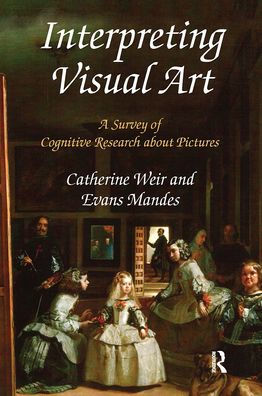Interpreting Visual Art explores the psychological and cognitive mechanisms that underlie one's interpretation of art. After the brain encodes visual information, this encoding is then processed by perceptual mechanisms to identify objects and depth in pictures. The brain incorporates many factors in order for people to "see" the art. Cognitive processes have a major role in how people interpret artworks because attention, memory, and language are also linked to the aesthetic experience. Catherine Weir and Evans Mandes first examine major attributes of aesthetic judgement - balance, symmetry, color, line, and shape - from an empirical point of view as opposed to more philosophical and speculative approaches. Then, they explore the perceptual process, paying special attention to art history in the Western world and emphasizing techniques from cave paintings to modern art. The role beauty and emotions play in our interpretations of pictures have been investigated from many approaches: evolutionary psychology, neuroscience, and appraisal theory. Through the application of empirical research in cognitive science to master works from Botticelli to Pollock, readers are introduced to a research-oriented understanding of how art has been perceived, interpreted, and appreciated in the twenty-first century. This book will appeal to those interested in art as well as those teaching art history, psychology, and neuroscience.
"1123901888"
Interpreting Visual Art: A Survey of Cognitive Research About Pictures
Interpreting Visual Art explores the psychological and cognitive mechanisms that underlie one's interpretation of art. After the brain encodes visual information, this encoding is then processed by perceptual mechanisms to identify objects and depth in pictures. The brain incorporates many factors in order for people to "see" the art. Cognitive processes have a major role in how people interpret artworks because attention, memory, and language are also linked to the aesthetic experience. Catherine Weir and Evans Mandes first examine major attributes of aesthetic judgement - balance, symmetry, color, line, and shape - from an empirical point of view as opposed to more philosophical and speculative approaches. Then, they explore the perceptual process, paying special attention to art history in the Western world and emphasizing techniques from cave paintings to modern art. The role beauty and emotions play in our interpretations of pictures have been investigated from many approaches: evolutionary psychology, neuroscience, and appraisal theory. Through the application of empirical research in cognitive science to master works from Botticelli to Pollock, readers are introduced to a research-oriented understanding of how art has been perceived, interpreted, and appreciated in the twenty-first century. This book will appeal to those interested in art as well as those teaching art history, psychology, and neuroscience.
51.99
In Stock
5
1

Interpreting Visual Art: A Survey of Cognitive Research About Pictures
262
Interpreting Visual Art: A Survey of Cognitive Research About Pictures
262
51.99
In Stock

Product Details
| ISBN-13: | 9781032476902 |
|---|---|
| Publisher: | Taylor & Francis |
| Publication date: | 01/21/2023 |
| Pages: | 262 |
| Product dimensions: | 6.00(w) x 9.00(h) x (d) |
About the Author
From the B&N Reads Blog
